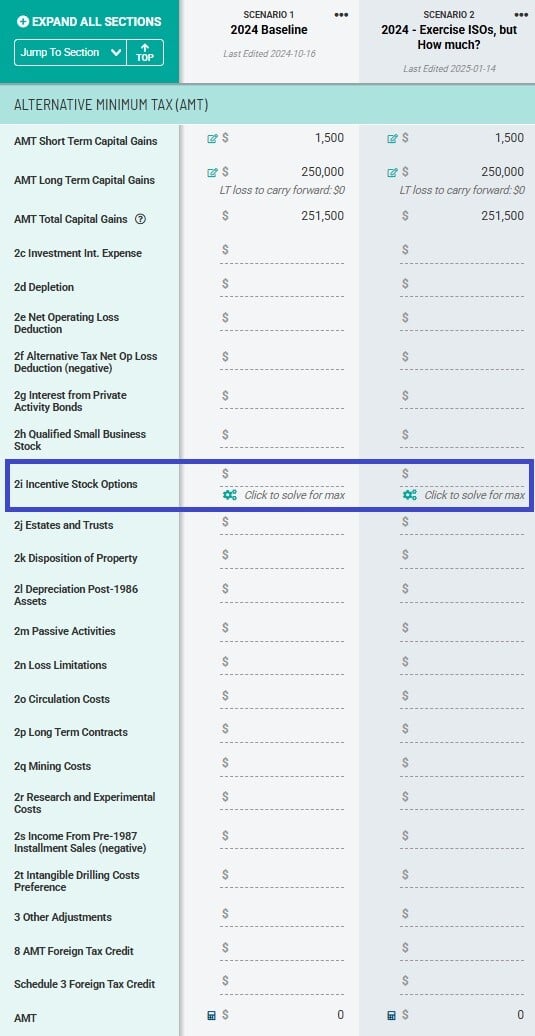How do I enter Incentive Stock Options (ISOs) in Scenario Analysis?
Entering Incentive Stock Options in Scenario Analysis
Under the regular tax calculation, exercising Incentive Stock Options (ISOs) is not a taxable event. This is different than the exercise of Non-qualified stock options (NSOs), where any increase between the grant price and the market price at exercise (also known as the "bargain element" or the "spread") is considered ordinary income.
For AMT (Alternative Minimum Tax) purposes; however, the difference in the exercise price and the fair market value of the stock at the time of exercise (sometimes referred to, again, as the "bargain element" or "spread") for a qualified ISO exercise is a preference item. This discount element needs to be entered in line 2i of the AMT section in Scenario Analysis where seen below.

Assuming that the rules for a qualifying disposition have been met, the sale of any shares obtained through an ISO exercise would be eligible for long-term capital gains treatment and should be included with any other gains for the year the Schedule D section.
Long-term capital gains also receive preferential treatment for AMT purposes. But in the case of shares obtained through ISO exercise, the cost basis for AMT purposes will be different compared to the regular tax calculation.
In the regular tax calculation, cost basis will equal the amount paid for the shares, or the number of shares obtained multiplied by the strike price. For AMT purposes, the cost basis is equal to the cost of the shares plus the bargain element of the exercise, resulting in a higher cost basis.
Accordingly, the same sale will have different amounts of net capital gains under the standard tax calculation and the AMT tax calculation. You will want to calculate and enter the gains separately for both systems and enter them in the appropriate sections: "Schedule D Income" (regular tax calculation) and "Alternative Minimum Tax (AMT)" (AMT calculation).
To account for this - and to get an accurate calculation of AMT - you will need to enter the difference in gains between the two systems as a negative adjustment in Row 2k ("Disposition of Property") of the "Alternative Minimum Tax (AMT)" section. Be sure, however, that you are only calculating the adjustment for those gains that are different between the two systems. If gains are the same for both the standard and the AMT system, then no adjustment is necessary.
Our article and webinar below on modeling not just ISOs, but other forms of equity compensation, may be a helpful resource as well.
How Do I Handle Equity Compensation (e.g., RSUs, ESPPs, NQSOs, ISOs, etc.) in Scenario Analysis?